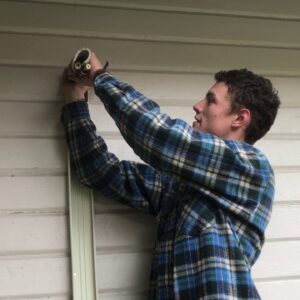Comprehensive Guide to Installing Mini-Split Line Sets: Ensuring Efficiency and Longevity
The seamless operation of a mini-split air conditioning system relies heavily on the proper installation of its components, particularly the line sets that connect the indoor unit to the outdoor condenser. This guide focuses on a critical aspect of the installation process: bending the line sets into the line hide without causing damage. This topic is inspired by a practical YouTube tutorial showcasing expert techniques and tips.
Introduction to Mini-Split Systems and Line Sets
A mini-split system, alternatively known as a ductless mini-split, offers an efficient and versatile cooling and heating solution for both residential and commercial spaces. Unlike traditional HVAC systems that utilize ductwork to distribute conditioned air, mini-split systems consist of an outdoor condenser unit and one or more indoor air handling units, connected by refrigerant line sets.
Line Sets
Line sets are essential for the transfer of refrigerant between the indoor and outdoor units. Typically, these line sets consist of a suction line (larger in diameter) and a liquid line (smaller in diameter), both of which need to be carefully routed to maintain system integrity and efficiency.
Line Hide
To protect and conceal these line sets, professionals often use line hide, also known as line cover or ducting. Line hide not only provides an organized appearance but also shields the refrigerant lines from environmental damage.
Tools and Materials Required
Before starting the installation, gather the necessary tools and materials to ensure a smooth and efficient process. Essential tools include:
- Line Set Bender: A specialized tool for bending the refrigerant lines without causing kinks.
- Flaring Tool: To flare the ends of the copper tubing for secure connections.
- Pipe Cutter: For clean and precise cutting of the line sets.
- Torque Wrench: To secure flare nuts with appropriate tightness.
- Manifold Gauge Set: For checking refrigerant pressures.
- Vacuum Pump: To evacuate air and moisture from the lines before charging the system.
- Protective Gloves: To prevent injuries while handling sharp and heavy components.
Step-by-Step Process of Installing and Bending Line Sets
1. Preparation
Begin by selecting the appropriate length of line set based on the distance between the indoor and outdoor units. It’s crucial to ensure the line sets are neither too long (leading to inefficient operation) nor too short (resulting in unnecessary stress on connections).
Inspect Components: Check for any physical damage on the line sets and ensure they are free from debris or moisture.
Plan the Route: Plan the path of the line sets, taking into account any bends or turns required to navigate from the indoor unit to the outdoor condenser. Ensure the pathway minimizes the risk of kinks and reduces potential obstacles.
2. Cutting the Line Sets
Using a pipe cutter, cut the line sets to the appropriate length. Ensure clean cuts to avoid any deformation that could impede the flow of refrigerant.
Deburring: After cutting, deburr the edges of the pipes using a deburring tool to remove any sharp edges or metal shavings that could cause leaks or damage.
3. Flaring the Ends
Flaring the ends of the copper tubing is a critical step to ensure a secure and leak-proof connection.
Use a Flaring Tool: Insert the end of the line set into the flaring tool and tighten it securely. Rotate the flaring tool to expand the end of the tubing into a cone shape. Make sure the flare is smooth without any cracks or deformities.
Inspect the Flare: Check the flared end meticulously to ensure it matches the specifications of the flare nut and the system fittings. A properly made flare should fit snugly into the connecting fittings without gaps.
4. Routing the Line Sets into Line Hide
This step is crucial as improper bending or handling can cause kinks, leading to inefficient operation or damage to the system.
Start Bending: Begin bending the line sets by gently applying pressure, being mindful of their rigidity. It’s essential to maintain control over the bending process to avoid kinks.
Use Your Fingers: As highlighted in the YouTube tutorial, use your fingers to guide the line sets into the line hide. By inserting your fingers into the hole where the line sets will be placed, you can mitigate the pressure and reduce the risk of kinking.
- Slowly Ease the Lines: As you bend the line sets, slowly pull your fingers out of the hole. This method allows you to gradually guide the line sets into place while easing the pressure.
- Protect Your Fingers: While this technique involves using your fingers to avoid kinks, be cautious to prevent injury. However, if a choice must be made, it’s better to sustain minor discomfort than to crush the line sets, which could compromise the system’s integrity.
Bending Tools for Precision: If manual bending proves challenging, use a line set bender. This tool ensures a uniform bend and significantly reduces the risk of causing kinks.
5. Securing the Line Sets
Once the line sets are successfully routed into the line hide, it’s essential to secure them properly to maintain stability and prevent movement.
Use Line Hide Components: Line hide typically includes various components such as connectors, couplings, and end caps to secure the line sets. Ensure that each section of the line hide is tightly connected and sealed.
Check for Stability: After securing the line sets, gently tug on them to ensure they are firmly held in place and not prone to shifting. This stability is crucial to prevent damage from movement or vibrations.
6. Connecting the Line Sets
With the line sets in place, the next step is to connect them to the indoor and outdoor units.
Attach Flare Nuts: Slide the flare nuts over the flared ends of the line sets and hand-tighten them onto the corresponding fittings on the indoor and outdoor units.
Torque to Specification: Using a torque wrench, tighten the flare nuts to the manufacturer’s specifications. This step is critical to prevent under-tightening (leading to leaks) or over-tightening (causing cracks or damage).
7. Vacuuming and Charging the System
Before starting the mini-split system, evacuate air and moisture from the line sets to ensure optimal performance.
Connect Manifold Gauge Set: Attach the manifold gauge set to the service ports on the outdoor condenser unit.
Use a Vacuum Pump: Attach a vacuum pump to the manifold gauge set and run it for the manufacturer-recommended time to achieve a deep vacuum.
Check for Leaks: After achieving the vacuum, close the manifold valves and monitor the gauges for any pressure increase, which may indicate leaks.
Charge the System: Once a leak-free vacuum is confirmed, charge the system with refrigerant as per the manufacturer’s guidelines. Use the manifold gauges to monitor pressures and ensure proper charging.
Post-Installation Checks and Final Considerations
Upon completing the installation, perform a series of checks to ensure the system operates efficiently and safely.
1. Operational Testing
Turn on the mini-split system and observe its operation. Monitor the indoor unit for air discharge temperature and check the outdoor unit for unusual noises or vibrations.
2. Inspect for Leaks
Using a refrigerant leak detector, inspect all connections and joints for possible leaks. Address any detected leaks promptly to maintain system efficiency and prevent refrigerant loss.
3. Monitor System Performance
Over the next few days, monitor the system’s performance to ensure it maintains the desired temperature and operates efficiently. Address any issues that arise during this period.
4. Regular Maintenance
To prolong the lifespan of the mini-split system and maintain its efficiency, schedule regular maintenance. Clean the filters, inspect the line sets, and ensure the system is free from debris or blockages. Regular maintenance will help detect and resolve potential issues before they escalate.
Conclusion
Properly installing and bending mini-split line sets is a meticulous but essential process that significantly impacts the system’s performance and longevity. By following the steps outlined in this guide, inspired by practical insights from the YouTube tutorial, you can ensure a successful installation that avoids common pitfalls such as kinking or damaging the line sets.
From careful planning and precise cutting to using the right tools for flaring and bending, every step in the process demands attention to detail. The technique of using your fingers to guide the line sets into the line hide may seem unconventional, but it proves effective in mitigating the risk of kinks.
By adhering to these best practices and performing the necessary checks and maintenance, you’ll not only install the mini-split line sets correctly but also set the foundation for an efficient and long-lasting system that delivers optimal comfort and performance.

